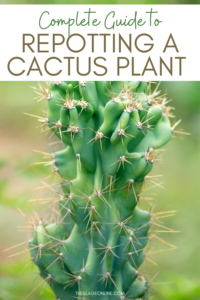Cacti and palm trees are the quintessential symbols of desert and tropical landscapes, respectively. Both can create a stunning and visually appealing garden, but pairing these two distinct plant types requires careful consideration and strategic planning. In this article, we will explore the nuances of harmonizing cacti with palm trees in your garden, covering variety, aesthetics, and cultivation techniques to achieve a successful design.
Exploring Cacti: Varieties and Aesthetic Appeal
To effectively combine cacti with palm trees, one must first appreciate the remarkable diversity within the cactus family. Ranging from the striking Saguaro with its towering stature to the diminutive but vibrant Echinocereus, cacti offers an eclectic palette for gardening enthusiasts.
When selecting cacti, consider the aesthetic they will provide. For example, the often-misunderstood Peruvian apple cactus produces beautiful, pink flowers that can add a splash of color amidst the lush greens of palm trees. Similarly, the prickly pear features flat pads and vivid fruits, which not only serve as a visual treat but also attract pollinators.
Additionally, character is key. The sculptural form of a cactus can serve as a stark contrast to the feathery foliage of palm trees, creating a dynamic arrangement. The juxtaposition between the rugged, spiny texture of the cactus and the smooth, flowing fronds of palm leaves offers depth and complexity, making your garden a visual masterpiece.
Choosing the Right Palm Trees: A Guide to Compatibility
While many palm trees can complement cacti beautifully, certain species are particularly suited for this pairing. The Washingtonia filifera, or California fan palm, thrives in arid conditions and does not overshadow the cacti with its mature height, thus maintaining a balanced aesthetic. On the other hand, the more majestic Sabal palmetto can create an impressive backdrop while providing dappled light that could benefit certain cactus species.
Consider the growth habits of your palms. Some palms, like the Pritchardia, have a more rounded canopy, which can cast more shade—an essential factor if you are gardening in particularly hot climes. Additionally, evaluate their water and nutrient requirements. Generally, both cacti and palms are drought-tolerant, allowing them to coexist harmoniously in a shared garden with minimal irrigation needs. Make it a priority to pair species that thrive under similar soil conditions to maximize growth potential.
Creating Your Garden Layout: Designing with Intention
Once you have selected your favorite cacti and palm tree species, the next step is to lay out your garden intentionally. Strategic placement is essential for visual balance and optimal plant health. Creating layers can enhance the three-dimensional appeal of your garden: taller palm trees in the back, with cacti offering architectural interest at various heights in the foreground.
Consider creating focal points for visual intrigue. A bold Saguaro surrounded by clusters of smaller cacti and framed by elegantly arching palm fronds can create a striking display. Grouping cacti of similar colors together can enhance their vibrancy when paired with contrasting green palm fronds.
It is essential to factor in sunlight and shade patterns throughout the day. Palms, depending on their immediate environment, may provide necessary shelter for certain cacti, which can be sensitive to extreme sunlight. This delicate balance can ensure that each plant receives its required dosage of sunlight while maintaining harmonious interactions.
Soil Considerations: The Foundation for Success
Soil type plays a pivotal role in the success of your garden. Both cacti and palms prefer well-draining soils, but they may have different pH preferences. Assess your soil composition and amend it as necessary to create a suitable growing medium.
Soil amendments such as sand or perlite can improve drainage and aeration, while organic matter can provide nutrients essential for palms. Layering your soil correctly, heavier amendments at the base and lighter ones on top, allows for accommodating the differing root structures of both plants.
Watering Principles: Finding the Right Balance
Establishing an appropriate watering routine is crucial. Cacti thrive on infrequent watering, allowing the soil to dry out completely between sessions. In contrast, while mature palms may tolerate drought, they also benefit from regular but moderate irrigation, especially during the growing season.
An effective strategy is to site your plants where rainfall can benefit both types, using a drip irrigation system for precision during dry spells. Adequate sunlight exposure when watering will also optimize growth and health. It’s essential, however, to observe each plant’s condition regularly to adjust your approach accordingly.
A Harmonious Union: Conclusion
Pairing cacti with palm trees in your garden can yield a striking landscape characterized by both visual and textural intrigue. The complementary nature of these species lies in their contrasting appearances and similar water and sunlight needs. By researching species, planning your layout, and mindfully attending to soil and watering requirements, you can create a thriving habitat for both cacti and palm trees.
Embrace the desert charm and tropical allure in your garden design. With thoughtful consideration and an eye for aesthetics, you can cultivate a unique outdoor space that celebrates the beauty and resilience of these extraordinary plants.




Leave a Comment